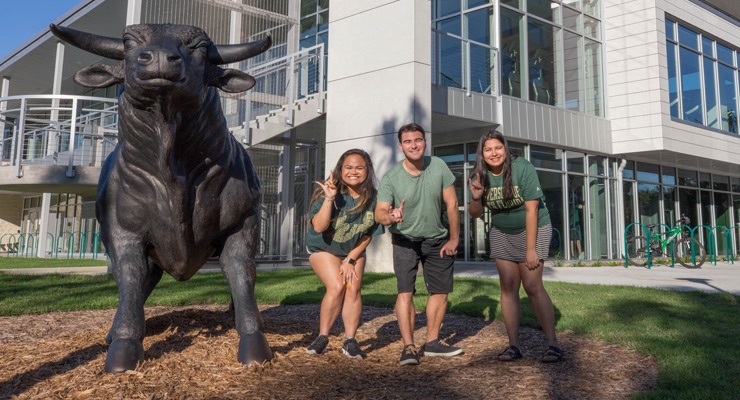
Shopping for a college is akin to shopping for shoes: Don’t bother to start until you know what you really need, from size and type to cost. But hey, a school is a school, right?
No. There are different types of colleges; each serves a specific purpose; and one size does not fit all.
University? College? Two Year? Four Year?
If you’re scratching your head and asking what are the different types of colleges, you should know that the answers vary by depth. There are categories and subcategories. By way of explanation, let’s extend the shoe analogy a bit. One view on shoes might be that there are work shoes and there are play shoes. Period. Apply that minimalist approach to schools, and you can boil the college education options down to two primary categories.
Two-Year Colleges
Dig a bit deeper and you find that two-year colleges (also known as community colleges, junior colleges or technical colleges) typically deliver two-year paths to associate degrees or certificates. The path you choose depends on your needs.
- Vocational programs at two-year schools are designed to deliver certified career training in fields ranging from heating and air conditioning to auto or aviation mechanics and nursing.
- Transfer programs at two-year schools yield degrees that can be used to open doors at four-year schools for those in pursuit of more advanced degrees. A handful of junior colleges even offer bachelor’s degrees.
Four-Year Colleges and Universities
The stock-in-trade of four-year colleges and universities is the bachelor’s degree, a fundamental stepping stone to positions in myriad professions. When it comes to comparing four-year and two-year schools, it’s all about scope and scale, just as it is when comparing four-year colleges with universities.
The big difference here is that four-year schools almost always have far more resources than junior colleges:
- On-campus housing for students
- Infrastructure such as research centers, top-notch libraries, performing arts venues and sports facilities
- Greater breadth of academic offerings, including postgraduate programs
- Athletics and arts programs
- Extensive (and typically more experienced) faculty and staff
- In-house extracurricular activities and programs
 Style, Size, Mission and Philosophy Matter
Style, Size, Mission and Philosophy Matter
The College Board has a college-types list that meshes nicely with one compiled by the National Association for College Admission Counseling. Here’s a compacted version of what both sources identify as college types:
- Public and private colleges: The key difference here is cost. Public colleges receive public funding and, therefore, are less expensive to attend. The taxpayer funding of public schools also increases the accountability of the schools. (They answer to government overseers.) Greater financial resources also mean public schools typically are larger.
- For-profit colleges: These are businesses, and profit is a business’s true bottom line. This is why you can expect to pay more for your academic outcome here. Look closely at these schools’ histories and accreditation, especially if the academic path you have mapped relies on the transfer of credits.
- Liberal arts colleges: These schools offer bachelor’s degrees in the liberal arts and typically are private. Employers often view the breadth of a liberal arts education as a selling point for job applicants.
- Colleges with a special focus: Examples here are technical institutes, such as arts and engineering colleges, single-sex colleges, religiously affiliated colleges (where sectarian studies often are a requirement) and colleges that primarily serve a particular ethnic or racial group.
One type that only NACAC includes is the tribal college, which is designed to serve American-Indian students.
Military Academies and Institutes
These options are not mentioned specifically by many experts in answering the question of what are the types of colleges, but they are too significant to ignore.
- Service academies: Each branch of the military has one service academy, along with the Coast Guard and Merchant Marine. All you need to get in is a sponsoring member of Congress and a stellar academic record. The price is right, free, but you must be willing to serve in the military. That service actually begins the day the schooling starts.
- Military institutes: Pay-for versions of the military academies include public and private versions that run the academic gamut, from prep school to junior college and beyond. Public versions of the four-year military school include the Virginia Military Institute, The Citadel and Texas A&M University. Postgraduate civilian pursuits typically are an option.
Universities Typically Offer More Options
At a large university, students still shopping career options are more likely to find their fit, without having to change addresses. Consider the options afforded at the University of South Florida, a public university with a student population that exceeds that of most U.S. towns.
The University of South Florida delivers more than 180 undergraduate majors and concentrations through its 14 colleges:
- USF College of Design, Art, and Performance
- USF College of Arts and Sciences
- USF College of Behavioral and Community Sciences
- USF Muma College of Business
- USF College of Education
- USF College of Engineering
- USF College of Global Sustainability
- USF College of Graduate Studies
- USF Honors College
- USF College of Marine Science
- USF Morsani College of Medicine
- USF College of Nursing
- USF College of Pharmacy
- USF College of Public Health
If any of these sound like a good fit, the dedicated staff at the USF Office of Admissions is ready to help. Contact us today online or by phone at (813) 974-3350.


